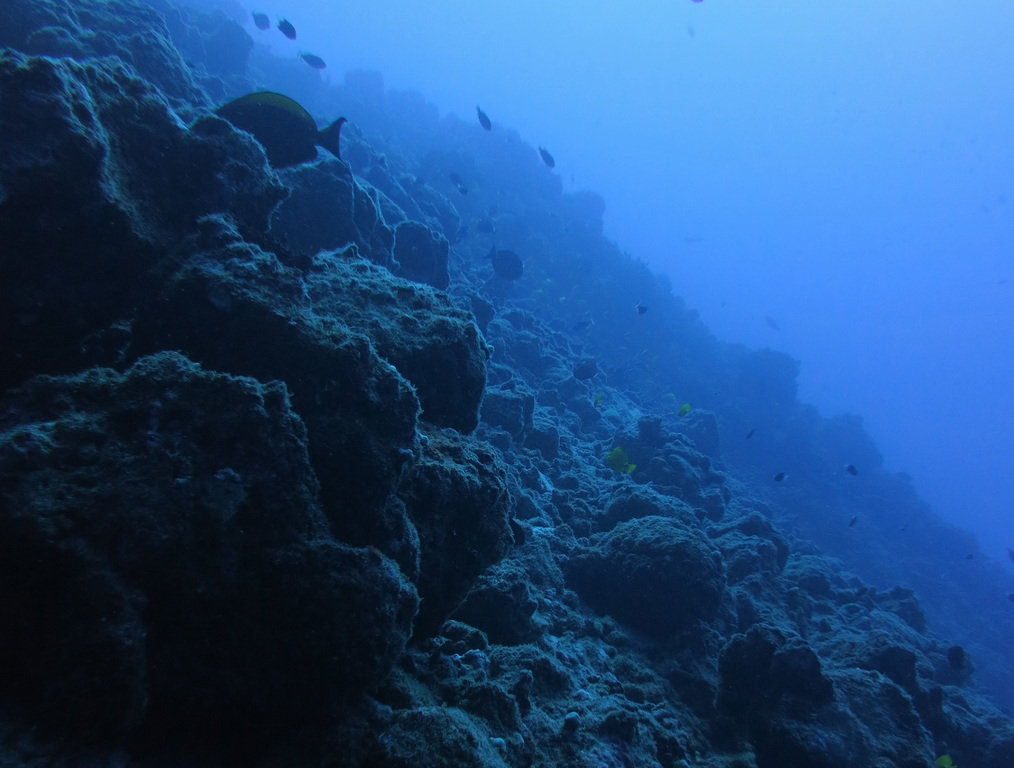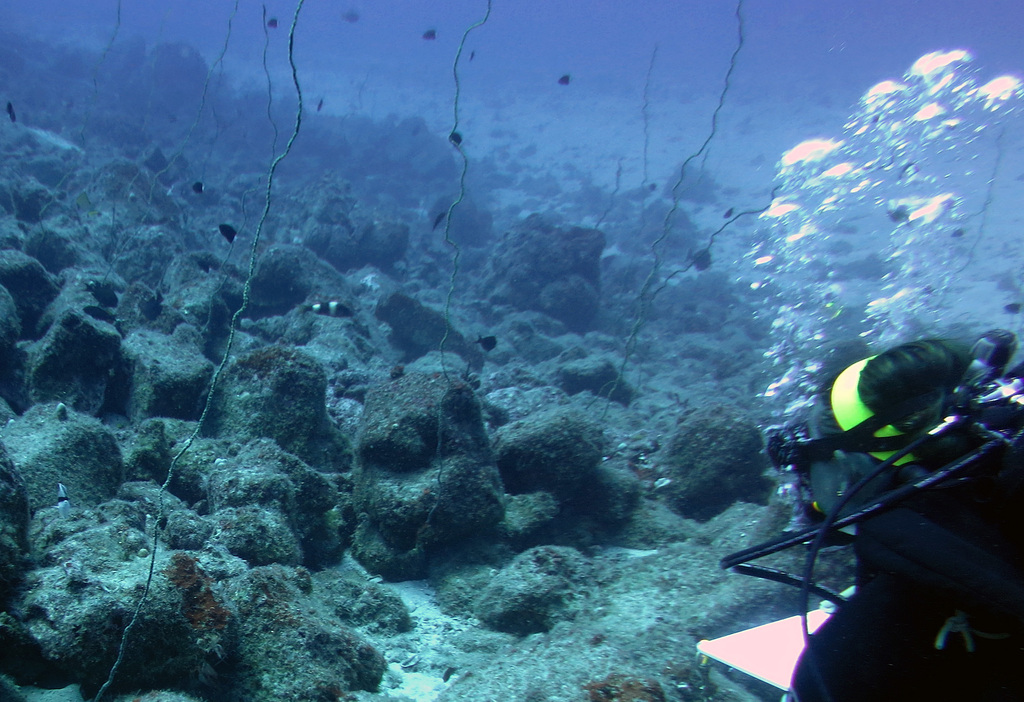Behind the science:
Trophic designation and live coral cover predict changes in reef-fi...
2018, February 20
Posted by Veronica Radice
Fields
Community structure
Ecology
Focusgroups
Fishes
Overall benthic (groups)
Locations
USA - Hawaii
Platforms
SCUBA (open-circuit or unspecified)
“Reef-fish community structure influenced by trophic position, coral habitat and depth”
What was the most challenging aspect of your study (can be anything from field, lab to analysis)?
The most challenging aspect was finding sites with sufficient habitat. On the big island of Hawaii, there are LIDAR maps, but they only reach about 15m depth, and bathymetry maps for this region only begin around 500m depth. After talking with local deep divers, I had a “hit list” of sites to try, but it still took me the better part of a field season to find sites that had enough deep habitat to conduct multiple surveys.
What was the most memorable moment in undertaking this study?
There’s so many to choose from! Probably one of the most memorable moments was coming up from a dive and finding a 4m tiger shark coming in to check us out. I knew that they were in the area, but it’s always a heart-stopping moment when you see something that big coming into view.
 Reef slope from 10 to 60 m depth (Hookena)
(C) Karen Williams Bryan
[CC BY-NC 4.0]
Reef slope from 10 to 60 m depth (Hookena)
(C) Karen Williams Bryan
[CC BY-NC 4.0]
What was your favorite research site in this study and why?
I have a site off Kaohe Bay in South Kona – it’s a black pebble beach with a steeply sloping ridge that extends down hundreds of feet. The setting of the bay, and the underwater life there is some of the best on the island. Plus, there’s a nice pebble area at about 20 ft. that house extremely curious fish which makes tedious deco stops much less cumbersome.
Other than your co-authors, with whom would you like to share credit for this work?
There are so many people to credit and thank – without all of them this work simply would not have been possible. I have had dozens of undergraduate and graduate student assistants to facilitate fieldwork, collections, and video analysis, so to all of them, thanks! All of the institutions who have provided funding, of course, are directly responsible for this work. In addition, I would not have been anywhere near as successful with this project if it hadn’t been for Kona Diving Company in Kona, Hawaii. They were amazing in their assistance and expertise of the area. And finally, I would like to thank all of my mentors and committee members who offered guidance on this project and the manuscript.
 Cori Kane conducting fish surveys at 50 m depth (Kaohe Bay)
(C) Anuschka Faucci
[CC BY-NC 4.0]
Cori Kane conducting fish surveys at 50 m depth (Kaohe Bay)
(C) Anuschka Faucci
[CC BY-NC 4.0]
Any important lessons learned (through mistakes, experience or methodological advances)?
Finding deep spawning aggregations are amazing, but they really mess with depth-related trends! Also, always keep snacks on hand (and in your BC pocket) for hungry undergraduate assistants – it really helps with morale on long days.
Can we expect any follow-up on this work?
This is the first of many manuscripts within my shallow-mesophotic reef project. The following studies will focus on understanding mechanisms responsible for reef fish distribution patterns in upper mesophotic depths. I hope to have a few more manuscripts submitted for publication within the next year, so stay tuned! I am finishing my PhD this spring, but I aim to continue aspects of this work in future post-docs or other academic positions. If anyone knows of post-doc opportunities for a fish ecologist, please let me know!
Featured article:
|
|
Trophic designation and live coral cover predict changes in reef-fish community structure along a shallow to mesophotic gradient in Hawaii | article Kane CN, Tissot BN (2017) Coral Reefs 36:891–901 |
|
